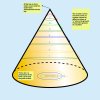PG1995
Active Member
Hi
Could you please help me with this query? Thanks a lot.
Regards
PG
Useful Link(s):
1: https://tutorial.math.lamar.edu/Classes/CalcIII/MultiVrbleFcns.aspx
Could you please help me with this query? Thanks a lot.
Regards
PG
Useful Link(s):
1: https://tutorial.math.lamar.edu/Classes/CalcIII/MultiVrbleFcns.aspx
Attachments
Last edited:



